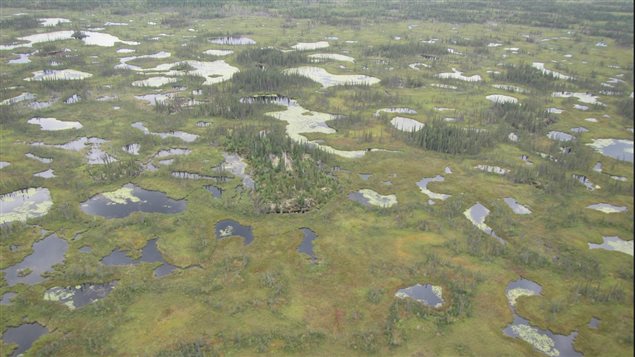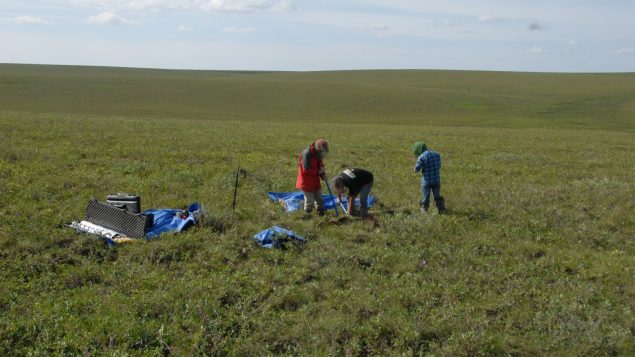Scientists have found that frozen ground located in Arctic regions holds twice as much mercury as the rest of the earth, oceans and atmosphere, and the toxic metal is being released as the climate changes. Scientists with the National Snow and Ice Data Centre (NSIDC) in the U.S. say this finding has “significant implications for human health and ecosystems worldwide.”
Permafrost occurs in about 24 per cent of the Northern Hemisphere land surface surrounding the Arctic Ocean. Previous studies assumed there was little or no mercury in these regions but this study suggests the opposite is true.
Climate models predict a 30 to 90 per cent reduction in permafrost by the year 2100, depending on fossil fuel emissions.

Permafrost underlies between 40 and 50 per cent of Canada’s land mass. (Cyrielle Laurent)
Even small amounts of mercury are dangerous
The World Health Organization (WHO) says exposure to even small amounts of mercury may cause serious health problems and is a threat to the development of children before and after they are born. “Mercury may have toxic effects on the nervous, digestive and immune systems, and on lungs, kidneys, skin and eyes,” states the WHO website. “Mercury is considered by WHO as one of the top ten chemicals or groups of chemicals of major public health concern.”
How much, when, where?
The NSIDC researchers will release another study modelling the release of mercury from permafrost due to climate change. Quoted in a news release, NSIDC scientists Kevin Schaefer says: “Permafrost contains a huge amount of mercury. We need to know how much mercury will get released from thawing permafrost, when it will get released, and where.”







For reasons beyond our control, and for an undetermined period of time, our comment section is now closed. However, our social networks remain open to your contributions.